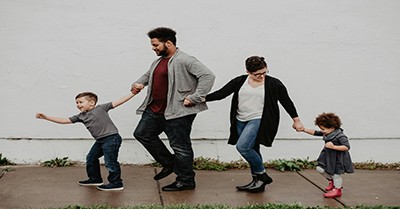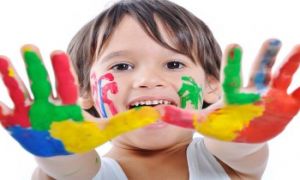Here's a breakdown of Exceeding Theme 3: Meaningful Engagement with Families and/or the Community across Quality Areas 1 to 7, tailored to your advocacy lens. This theme is all about co-constructing practice with families and communities—ensuring their voices shape decisions, environments, and outcomes.
Quality Area 1: Educational Program and Practice
Overview: Families and communities actively influence curriculum decisions, documentation, and pedagogical approaches. Their cultural knowledge and aspirations are embedded in learning.
Examples:
- Families co-create learning goals during planning meetings, influencing inquiry topics.
- Community elders contribute to storytelling sessions, enriching cultural curriculum.
Implementation Strategies:
- Host regular “curriculum conversations” with families to align learning with home values.
- Embed community knowledge holders into planning cycles and documentation reviews.
Quality Area 2: Children’s Health and Safety
Overview: Health and safety practices are shaped by family input and community expertise, ensuring culturally responsive and inclusive wellbeing strategies.
Examples:
- Families help design allergy-safe menus and hygiene routines that reflect cultural practices.
- Local health professionals run workshops on child safety and emotional wellbeing.
Implementation Strategies:
- Co-develop health policies with families, especially around sleep, nutrition, and illness.
- Partner with community health services for proactive safety education and support.
Quality Area 3: Physical Environment
Overview: Families and communities influence the design, use, and evolution of learning spaces, ensuring environments reflect shared values and cultural identity.
Examples:
- Families contribute artefacts and natural materials to enrich play spaces.
- Community artists collaborate on murals that reflect local stories and child voice.
Implementation Strategies:
- Conduct environment audits with families to ensure accessibility and cultural relevance.
- Invite community members to co-design outdoor learning zones with sustainability in mind.
Quality Area 4: Staffing Arrangements
Overview: Staffing decisions and professional development are informed by family feedback and community priorities, fostering trust and cultural competence.
Examples:
- Families provide input into educator recruitment, valuing language and cultural alignment.
- Community mentors support staff in trauma-informed and culturally safe practice.
Implementation Strategies:
- Include family representatives in staff induction and orientation planning.
- Partner with community organizations to deliver PD aligned with local needs.
Quality Area 5: Relationships with Children
Overview: Relationship-building strategies are shaped by family insights and community values, ensuring emotionally safe, respectful, and culturally attuned interactions.
Examples:
- Families share home routines and rituals to support secure transitions and attachments.
- Community leaders guide respectful relationship practices rooted in local culture.
Implementation Strategies:
- Use family interviews to inform key educator assignments and relational strategies.
- Embed community storytelling and rituals into daily routines to foster belonging.
Quality Area 6: Collaborative Partnerships with Families and Communities
Overview: This is the heart of Theme 3—families and communities are not just consulted but co-lead service decisions, advocacy, and continuous improvement.
Examples:
- Families co-author service philosophy and contribute to QIP goals.
- Community groups partner in advocacy campaigns for sector reform and inclusion.
Implementation Strategies:
- Establish shared leadership roles (e.g., family advisory panels, community liaisons).
- Co-host forums and listening circles to shape service direction and policy.
Quality Area 7: Governance and Leadership
Overview: Leadership is transparent, inclusive, and shaped by family and community input. Decision-making reflects shared values and collective vision.
Examples:
- Families help shape strategic plans and service priorities.
- Community leaders mentor governance teams in ethical and inclusive leadership.
Implementation Strategies:
- Embed family and community feedback loops into governance reviews and audits.
- Co-design leadership development pathways with community mentors and sector allies.
Further Reading
Exceeding Theme 1 Across Quality Areas 1 to 7
Exceeding Theme 2 Across Quality Areas 1 to 7
Exceeding Guidance For Quality Area 1
Exceeding Guidance For Quality Area 2
Exceeding Guidance For Quality Area 3
Exceeding Guidance For Quality Area 4
Exceeding Guidance For Quality Area 5
Exceeding Guidance For Quality Area 6
Exceeding Guidance For Quality Area 7







 Here is the list of the EYLF Learning Outcomes that you can use as a guide or reference for your documentation and planning. The EYLF
Here is the list of the EYLF Learning Outcomes that you can use as a guide or reference for your documentation and planning. The EYLF The EYLF is a guide which consists of Principles, Practices and 5 main Learning Outcomes along with each of their sub outcomes, based on identity,
The EYLF is a guide which consists of Principles, Practices and 5 main Learning Outcomes along with each of their sub outcomes, based on identity, This is a guide on How to Write a Learning Story. It provides information on What Is A Learning Story, Writing A Learning Story, Sample
This is a guide on How to Write a Learning Story. It provides information on What Is A Learning Story, Writing A Learning Story, Sample One of the most important types of documentation methods that educators needs to be familiar with are “observations”. Observations are crucial for all early childhood
One of the most important types of documentation methods that educators needs to be familiar with are “observations”. Observations are crucial for all early childhood To support children achieve learning outcomes from the EYLF Framework, the following list gives educators examples of how to promote children's learning in each individual
To support children achieve learning outcomes from the EYLF Framework, the following list gives educators examples of how to promote children's learning in each individual Reflective practice is learning from everyday situations and issues and concerns that arise which form part of our daily routine while working in an early
Reflective practice is learning from everyday situations and issues and concerns that arise which form part of our daily routine while working in an early Within Australia, Programming and Planning is reflected and supported by the Early Years Learning Framework. Educators within early childhood settings, use the EYLF to guide
Within Australia, Programming and Planning is reflected and supported by the Early Years Learning Framework. Educators within early childhood settings, use the EYLF to guide When observing children, it's important that we use a range of different observation methods from running records, learning stories to photographs and work samples. Using
When observing children, it's important that we use a range of different observation methods from running records, learning stories to photographs and work samples. Using This is a guide for educators on what to observe under each sub learning outcome from the EYLF Framework, when a child is engaged in
This is a guide for educators on what to observe under each sub learning outcome from the EYLF Framework, when a child is engaged in The Early Years Learning Framework describes the curriculum as “all the interactions, experiences, activities, routines and events, planned and unplanned, that occur in an environment
The Early Years Learning Framework describes the curriculum as “all the interactions, experiences, activities, routines and events, planned and unplanned, that occur in an environment


